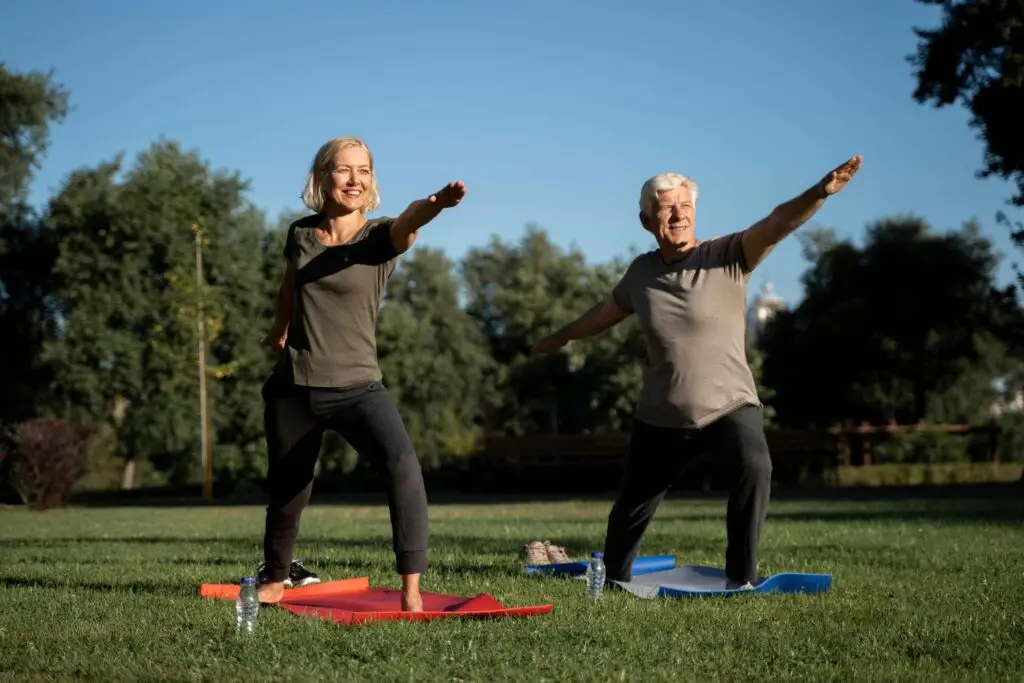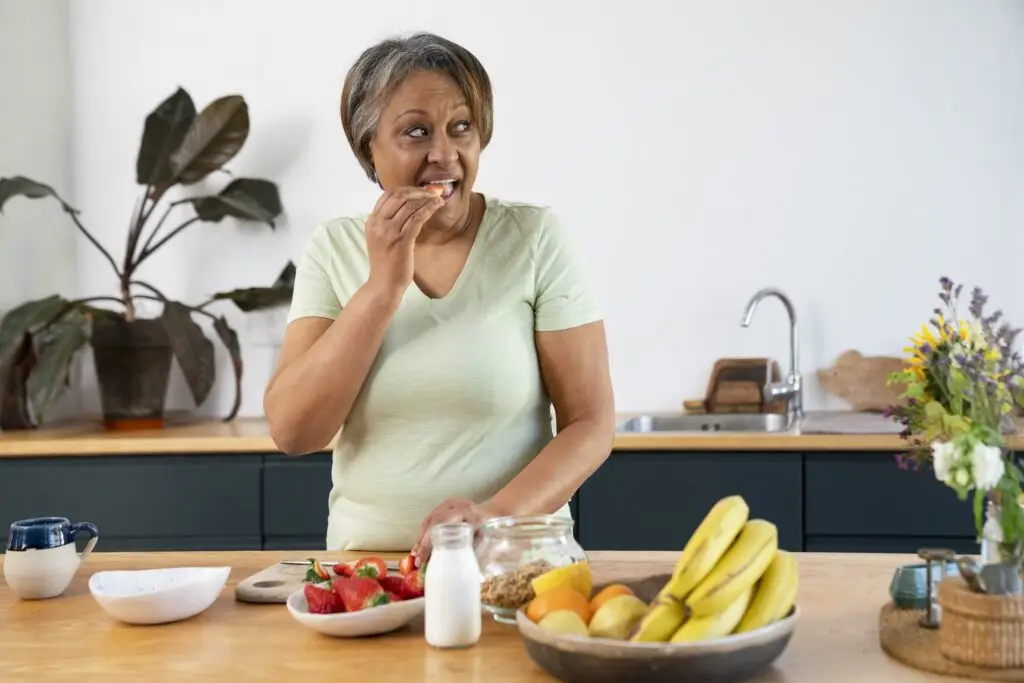Fueling Energy, Supporting Health, and Embracing Life After 60
As women cross the threshold into their 60s, nutrition takes on a new meaning. It’s no longer just about maintaining a certain weight or counting calories — it’s about supporting your body, boosting your energy, and nourishing your mind. A well-balanced, nutrient-rich diet can help reduce the risk of chronic illnesses, improve bone health, and support brain function, all while helping you feel your best every day.
Here’s how to make healthy eating simple, enjoyable, and effective in your 60s and beyond.
1. Focus on Nutrient-Dense Foods
Your metabolism naturally slows down as you get older, meaning your body needs fewer calories but more nutrients. This makes quality more important than quantity.
Great choices include:
- Leafy greens like kale, spinach, and collards for vitamins K and A
- Colorful veggies for antioxidants and fiber
- Berries for brain health and heart protection
- Salmon, sardines, and trout for omega-3 fatty acids
- Greek yogurt and cottage cheese for calcium and protein
👉 Tip: Fill half your plate with vegetables at every meal. It’s a simple way to increase fiber and fight inflammation.
2. Prioritize Protein to Maintain Muscle
After 60, we naturally lose muscle mass — a process called sarcopenia. But protein can help slow this down. Including quality protein in each meal helps maintain muscle, which supports balance, strength, and even independence.
Try:
- Eggs at breakfast
- Tuna or grilled chicken for lunch
- Lentils, beans, or tofu for dinner
- Protein smoothies with added fruits and greens
👉 Goal: Aim for 20–30 grams of protein per meal to preserve strength and energy.
3. Protect Your Bones with Calcium and Vitamin D
Bone loss becomes a bigger concern after menopause. Ensuring you get enough calcium and vitamin D is key to reducing the risk of fractures and osteoporosis.
Sources of calcium:
- Dairy (milk, cheese, yogurt)
- Leafy greens
- Fortified plant-based milks
Sources of vitamin D:
- Sunlight (just 15 minutes daily can help)
- Fatty fish
- Fortified cereals or supplements (talk to your doctor first)
👉 Note: Some women may need a supplement, especially during winter or if sun exposure is limited.
4. Choose Healthy Fats, Skip the Bad Ones
Not all fats are created equal. Healthy fats support brain health, reduce inflammation, and help your body absorb fat-soluble vitamins (A, D, E, and K).
Eat more of:
- Avocados
- Olive oil
- Nuts and seeds
- Fatty fish
Avoid:
- Trans fats (found in processed baked goods)
- Highly processed vegetable oils
- Anything labeled “partially hydrogenated”
👉 Reminder: Fat doesn’t make you fat — bad fats and over-processing do.
5. Watch Your Sugar and Salt Intake
Many processed foods hide added sugars and sodium, which can sneak into your diet and raise your risk of diabetes, heart disease, and high blood pressure.
Simple ways to cut back:
- Read nutrition labels (look for <6g sugar per serving)
- Choose unsweetened beverages and cereals
- Cook at home when possible — it gives you control
👉 Try this swap: Use cinnamon or vanilla extract instead of sugar in oatmeal. Use herbs, garlic, or lemon juice instead of salt.
6. Stay Hydrated
As you age, your sense of thirst can dull — and dehydration can creep up without warning. Staying hydrated helps regulate body temperature, cushion joints, and keep your skin and digestion in check.
Smart hydration tips:
- Keep a reusable water bottle with you
- Infuse water with lemon, mint, or cucumber if you get bored
- Herbal teas are a great low-caffeine option
👉 Goal: Try for 6–8 cups of water per day, more if it’s hot or you’re active.
7. Eat Mindfully and Joyfully
Healthy eating isn’t just about nutrients. It’s also about enjoying your food and listening to your body. Eat slowly, chew thoroughly, and tune in to your hunger and fullness signals.
- Avoid eating in front of the TV
- Set the table and make meals a special time
- Savor the flavors and textures of what you’re eating
👉 Bonus: Mindful eating can improve digestion and help prevent overeating.
8. Create Simple, Balanced Meals
No need to overcomplicate it. A healthy plate for women 60+ can follow this easy rule:
½ plate veggies + ¼ lean protein + ¼ whole grains
Here’s an example:
- Grilled salmon, roasted sweet potatoes, and steamed broccoli
- Lentil soup with a side of mixed greens and a slice of whole-grain toast
- Greek yogurt with chia seeds, sliced almonds, and fresh berries
👉 Don’t skip meals — eating regularly keeps blood sugar stable and energy levels high.
9. Don’t Be Afraid to Ask for Help
Whether it’s a dietitian, doctor, or even a health-conscious friend, talking to someone about your goals or challenges can help you stay on track. If you’re managing a condition like diabetes, high cholesterol, or osteoporosis, your nutritional needs might be more specific — and getting expert advice is worth it.
Final Thoughts
Turning 60 is a milestone worth celebrating — and healthy eating is one of the most powerful ways to support your well-being, independence, and happiness as you move through this chapter of life.
You don’t have to follow a strict diet or make huge changes overnight. Just start with one small step — maybe it’s adding more veggies to your plate or swapping soda for herbal tea. Over time, these little choices add up to big benefits.
💬 Your Turn
What’s one healthy change you’re making this week? Whether it’s drinking more water or cooking at home more often, you’ve got this.





